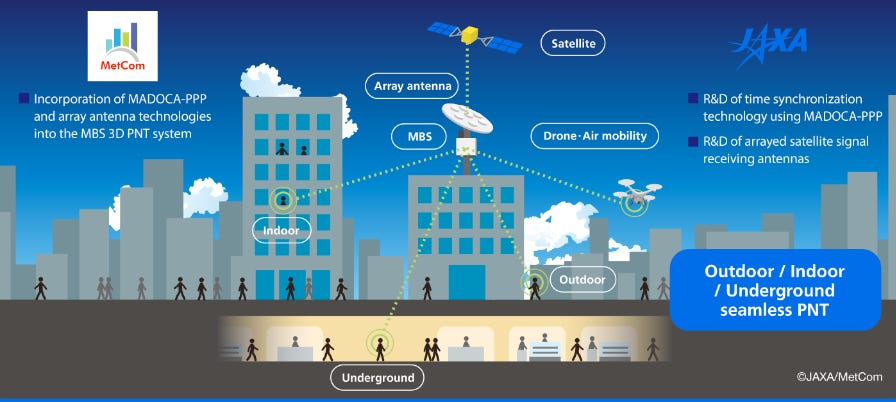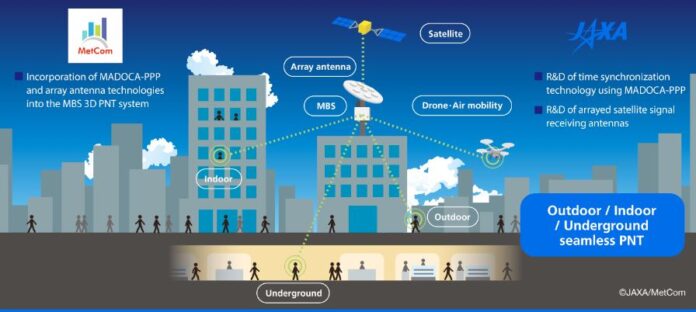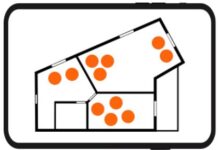MetCom and Japan Aerospace Exploration Agency (JAXA) are partnering to work on a terrestrial positioning, navigation and timing (PNT) system through the JAXA Space Innovation through Partnership and Co-creation (J-SPARC) program. The project aims to improve the accuracy of time synchronization between base stations, a key contributor to accurate terrestrial PNT, the agency said.
Specifically, the time synchronization information gained through Multi-GNSS Advanced Orbit and Clock Augmentation – Precise Point Positioning (MADOCA-PPP), which uses centimeter-level positioning augmentation signals, will be incorporated into the Metropolitan Beacon System (MBS). This is MetCom’s planned 3D PNT service that will allow location information in urban areas, whether underground, indoors or outdoors, the company said.

MetCom’s MBS 3D PNT service will provide location information whether underground, indoors or outdoors by transmitting positioning signals from proprietary ground base stations to enable the signals to be carried by radio waves at a higher reception strength, the company said. Use cases of the time distribution service include time synchronization for telecommunication systems, financial networks, data centers and power grid networks.
MetCom will incorporate time information, based on MADOCA-PPP, into the time synchronization process of the MBS 3D PNT system, the company said. Compared with using only GPS for time synchronization, the adoption of MADOCA-PPP-based time information is expected to enhance the positioning accuracy between base stations by two digits, the company said.
JAXA will conduct research and development on time synchronization technology using MADOCA-PPP and on array antenna technology. By using array antennas to increase directivity and allowing them to preferentially receive positioning signals from QZSS, JAXA plans to enhance resistance to jamming and spoofing, thereby improving security, safety and reliability, the agency said.
“Through this co-creation initiative with JAXA, we will combine the high interference resistance based on the directivity of QZSS and MetCom’s high signal reception strength distinctive to terrestrial systems, and in addition, capitalize on MADOCA-PPP’s time information, which is higher in accuracy by double digits,” said Hirasawa Hiroki, MetCom representative director, in a statement.



























